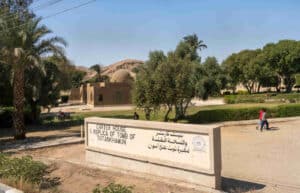The Ptolemaic period in Egypt runs from 323 BC to 30 BC. Three centuries of reign that, in many respects, represented an era of splendor… despite the fact that many Egyptologists tend to relegate it to a secondary level of interest, perhaps because it is one of the last stages of that civilization and because it introduced cultural novelties that distanced it in part from the purest canon of Ancient Egypt. In this post we tell you some anecdotes of this dynasty and its period of validity, which will help you better understand its legacy when you know it in your trip through the country.
Names for Posterity
Some of the most famous characters of Ancient Egypt were precisely Ptolemaic or, at least, closely related to them. For example, Alexander the Great himself: he was Macedonian but with his death (in 323 BC) the Ptolemaic era begins, because one of his trusted generals,
And if we go to the opposite extreme, at the end of the period, this happened with another universal: Cleopatra character. (officially, Cleopatra VII Thea Philopator). Although she was a ruler who stood out for numerous reasons, upon her death Egypt was relegated to a mere Roman province, despite the fact that she was enormously interested in the local culture, to the point of being the first Ptolemaic queen-pharaoh who spoke the Egyptian language.
Alexandria, its Capital
Alexandria was founded by Alexander the Great, hence its name. But the Ptolemies decided to promote it to the point of turning it into the capital. Therefore, a tourist visit to this city is an immersion in that era, in which constructions and institutions as important as the
Iconic Temples under Their Rule
Although Alexandria, the capital, stood out for its Hellenistic character, the rest of the country maintained its Egyptian culture and traditions. Especially in the south (Upper Egypt), where the Ptolemies built great religious temples to seek that communion with the common people. Examples of this are the temples of
Syncretism and New God
At the same time, in Alexandria and its area of influence, Hellenization advanced to the point of developing a syncretic religion, with Greek gods that were assimilated to the Egyptians. The greatest exponent of this was
Incestuous Marriages
Another aspect that may be surprising about the Ptolemies in Egypt were the incestuous relations of some of its rulers. For example, that of Ptolemy II with his sister Arsinoe II, whom he married in second marriage. This, however, was a custom that Egyptian rulers already practiced in the past and that aimed to seek greater control over the heirs to the throne, since it was the female womb that granted the royal lineage to the son.



